A Novel Paradigm for Underwater Monitoring Using Mobile Sensor Networks
Abstract
1. Introduction
2. Materials and Methods
2.1. Subcultron System Description
2.1.1. AMussel
2.1.2. APad
2.2. Formal System Description
2.2.1. Exploration Units Deployment
| Algorithm 1: Deployment procedure |
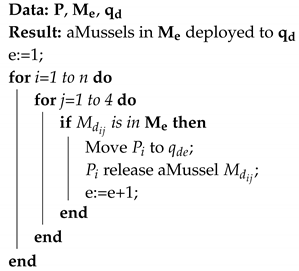 |
2.2.2. Outlier Detection
| Algorithm 2: Used outlier detection algorithm |
 |
2.2.3. Verification Units Deployment
2.2.4. Outlier Verification
2.2.5. Relocation
3. Results
3.1. Setup
3.2. Experimental Results
4. Conclusions
Author Contributions
Funding
Acknowledgments
Conflicts of Interest
Abbreviations
| API | Application Programming Interface |
| ASV | Autonomous Surface Vehicle |
| AUV | Autonomous Underwater Vehicle |
| GPS | Global Positioning System |
| GSM | Global System for Mobile Communications |
| IMU | Inertial Measurement Unit |
| IoUT | Internet of Underwater Things |
| UASN | Underwater Acoustic Sensor Network |
References
- Tagliapietra, D.; Aloui Bejaoui, N.; Bellafiore, D.; De Wit, R.; Ferrarin, C.; Gamito, S.; Lasserre, P.; Magni, P.; Mistri, M.; Pérez Ruzafa, A.; et al. The ecological implications of climate change on the Lagoon of Venice. Unesco Digit. Libr. 2011, 4, 1–48. [Google Scholar]
- Ferrighi, A. Flooding and environmental challenges for Venice and its lagoon: State of knowledge. Environmentalist 2006, 26, 331. [Google Scholar]
- Sorokin, Y.I.; Sorokin, P.Y.; Giovanardi, O.; Dalla Venezia, L. Study of the ecosystem of the lagoon of Venice, with emphasis on anthropogenic impact. Mar. Ecol. Prog. Ser. 1996, 141, 247–261. [Google Scholar] [CrossRef]
- Argese, E.; Cogoni, G.; Zaggia, L.; Zonta, R.; Pini, R. Study on redox state and grain size of sediments in a mud flat of the Venice Lagoon. Environ. Geol. Water Sci. 1992, 20, 35–42. [Google Scholar] [CrossRef]
- Solidoro, C.; Pecenik, G.; Pastres, R.; Franco, D.; Dejak, C. Modelling macroalgae (Ulva rigida) in the Venice lagoon: Model structure identification and first parameters estimation. Ecol. Model. 1997, 94, 191–206. [Google Scholar] [CrossRef]
- Lang, F.; von der Lippe, M.; Schimpel, S.; Scozzafava-Jaeger, T.; Straub, W. Topsoil morphology indicates bio-effective redox conditions in Venice salt marshes. Estuar. Coast. Shelf Sci. 2010, 87, 11–20. [Google Scholar] [CrossRef]
- Akyildiz, I.F.; Pompili, D.; Melodia, T. Underwater acoustic sensor networks: Research challenges. Hoc Netw. 2005, 3, 257–279. [Google Scholar] [CrossRef]
- Tuna, G.; Gungor, V.C. A survey on deployment techniques, localization algorithms, and research challenges for underwater acoustic sensor networks. Int. J. Commun. Syst. 2017, 30, e3350. [Google Scholar] [CrossRef]
- Kao, C.C.; Lin, Y.S.; Wu, G.D.; Huang, C.J. A Comprehensive Study on the Internet of Underwater Things: Applications, Challenges, and Channel Models. Sensors 2017, 17, 1477. [Google Scholar] [CrossRef]
- Shkurti, F.; Xu, A.; Meghjani, M.; Higuera, J.C.G.; Girdhar, Y.; Giguere, P.; Dey, B.B.; Li, J.; Kalmbach, A.; Prahacs, C.; et al. Multi-domain monitoring of marine environments using a heterogeneous robot team. In Proceedings of the 2012 IEEE/RSJ International Conference on Intelligent Robots and Systems, Vilamoura, Portugal, 7–12 Octomber 2012; pp. 1747–1753. [Google Scholar]
- Girdhar, Y.; Xu, A.; Shkurti, F.; Gamboa Higuera, J.C.; Meghjani, M.; Rekleitis, I.; Dudek, G. Monitoring Marine Environments using a Team of Heterogeneous Robots. In Proceedings of the RSS 2012 Workshop on Robotics for Environmental Monitoring (WREM 2012), Vilamoura, Portugal, 7–12 October 2012. [Google Scholar]
- Jaffe, J.S.; Franks, P.J.; Roberts, P.L.; Mirza, D.; Schurgers, C.; Kastner, R.; Boch, A. A swarm of autonomous miniature underwater robot drifters for exploring submesoscale ocean dynamics. Nat. Commun. 2017, 8, 1–8. [Google Scholar] [CrossRef]
- Molchanov, A.; Breitenmoser, A.; Sukhatme, G.S. Active drifters: Towards a practical multi-robot system for ocean monitoring. In Proceedings of the 2015 IEEE International Conference on Robotics and Automation (ICRA), Seattle, WA, USA, 26–30 May 2015; pp. 545–552. [Google Scholar]
- Zhang, B.; Sukhatme, G.S.; Requicha, A.A. Adaptive sampling for marine microorganism monitoring. In Proceedings of the 2004 IEEE/RSJ International Conference on Intelligent Robots and Systems (IROS) (IEEE Cat. No. 04CH37566), Sendai, Japan, 28 September–2 October 2004; Volume 2, pp. 1115–1122. [Google Scholar]
- Vasilescu, I.; Kotay, K.; Rus, D.; Dunbabin, M.; Corke, P. Data Collection, Storage, and Retrieval with an Underwater Sensor Network. In Proceedings of the 3rd International Conference on Embedded Networked Sensor Systems, SanDiego, CA, USA, 2–4 November 2005; pp. 154–165. [Google Scholar] [CrossRef]
- Ribeiro, F.J.L.; de Castro Pinto Pedroza, A.; Costa, L.H.M.K. Underwater monitoring system for oil exploration using acoustic sensor networks. Telecommun. Syst. 2015, 58, 91–106. [Google Scholar] [CrossRef]
- Burgard, W.; Moors, M.; Stachniss, C.; Schneider, F.E. Coordinated multi-robot exploration. IEEE Trans. Robot. 2005, 21, 376–386. [Google Scholar] [CrossRef]
- Varughese, J.C.; Thenius, R.; Leitgeb, P.; Wotawa, F.; Schmickl, T. A Model for Bio-Inspired Underwater Swarm Robotic Exploration. IFAC-PapersOnLine 2018, 51, 385–390. [Google Scholar] [CrossRef]
- Birk, A. Distributed Communicative Exploration under underwater communication constraints. In Proceedings of the 2011 IEEE International Symposium on Safety, Security, and Rescue Robotics, Kyoto, Japan, 1–5 November 2011; pp. 339–344. [Google Scholar]
- Fossum, T.O.; Eidsvik, J.; Ellingsen, I.; Alver, M.O.; Fragoso, G.M.; Johnsen, G.; Mendes, R.; Ludvigsen, M.; Rajan, K. Information-driven robotic sampling in the coastal ocean. J. Field Robot. 2018, 35, 1101–1121. [Google Scholar] [CrossRef]
- Chandola, V.; Banerjee, A.; Kumar, V. Anomaly detection. ACM Comput. Surv. 2009, 41, 1–58. [Google Scholar] [CrossRef]
- Mazdin, P.; Arbanas, B.; Haus, T.; Bogdan, S.; Petrovic, T.; Miskovic, N. Trust Consensus Protocol for Heterogeneous Underwater Robotic Systems. IFAC-PapersOnLine 2016, 49, 341–346. [Google Scholar] [CrossRef]
- Franceschelli, M.; Giua, A.; Pisano, A. Finite-Time Consensus on the Median Value With Robustness Properties. IEEE Trans. Autom. Control 2017, 62, 1652–1667. [Google Scholar] [CrossRef]
- Vasiljevic, G.; Petrovic, T.; Arbanas, B.; Bogdan, S. Dynamic Median Consensus for Marine Multi-Robot Systems Using Acoustic Communication. IEEE Robot. Autom. Lett. 2020, 5, 5299–5306. [Google Scholar] [CrossRef]
- Saldaña, D.; Assunção, R.; Campos, M.F.M. A distributed multi-robot approach for the detection and tracking of multiple dynamic anomalies. In Proceedings of the 2015 IEEE International Conference on Robotics and Automation (ICRA), Seattle, WA, USA, 26–30 May 2015; pp. 1262–1267. [Google Scholar]
- Luo, T.; Nagarajan, S.G. Distributed Anomaly Detection Using Autoencoder Neural Networks in WSN for IoT. In Proceedings of the 2018 IEEE International Conference on Communications (ICC), Kansas City, MO, USA, 20–24 May 2018; pp. 1–6. [Google Scholar]
- Mahmoud, M.S.; Khalid, H.M. Distributed Kalman filtering: A bibliographic review. IET Control Theory Appl. 2013, 7, 483–501. [Google Scholar] [CrossRef]
- Olfati-Saber, R. Distributed Kalman filtering for sensor networks. In Proceedings of the 2007 46th IEEE Conference on Decision and Control, New Orleans, LA, USA, 12–14 December 2007. [Google Scholar] [CrossRef]
- Caliskan, F.; Hajiyev, C. Aircraft sensor fault diagnosis based on Kalman filter innovation sequence. In Proceedings of the 37th IEEE Conference on Decision and Control (Cat. No.98CH36171), Tampa, FL, USA, 18 December 1998. [Google Scholar] [CrossRef]
- Thenius, R.; Moser, D.; Varughese, J.C.; Kernbach, S.; Kuksin, I.; Kernbach, O.; Kuksina, E.; Mišković, N.; Bogdan, S.; Petrović, T.; et al. subCULTron—Cultural Development as a Tool in Underwater Robotics. In Artificial Life and Intelligent Agents; Springer International Publishing: Berlin/Heidelberg, Germany, 2018; pp. 27–41. [Google Scholar] [CrossRef]
- Lončar, I.; Babić, A.; Arbanas, B.; Vasiljević, G.; Petrović, T.; Bogdan, S.; Mišković, N. A Heterogeneous Robotic Swarm for Long-Term Monitoring of Marine Environments. Appl. Sci. 2019, 9, 1388. [Google Scholar] [CrossRef]
- Babić, A.; Vasiljević, G.; Mišković, N. Vehicle-in-the-Loop Framework for Testing Long-Term Autonomy in a Heterogeneous Marine Robot Swarm. IEEE Robot. Autom. Lett. 2020, 5, 4439–4446. [Google Scholar] [CrossRef]
- Barcellona, S.; Brenna, M.; Foiadelli, F.; Longo, M.; Piegari, L. Analysis of ageing effect on Li-polymer batteries. Sci. World J. 2015, 2015, 979321. [Google Scholar] [CrossRef] [PubMed]
- Babić, A.; Mandić, F.; Vasiljević, G.; Mišković, N. Autonomous docking and energy sharing between two types of robotic agents. IFAC-PapersOnLine 2018, 51, 406–411. [Google Scholar] [CrossRef]

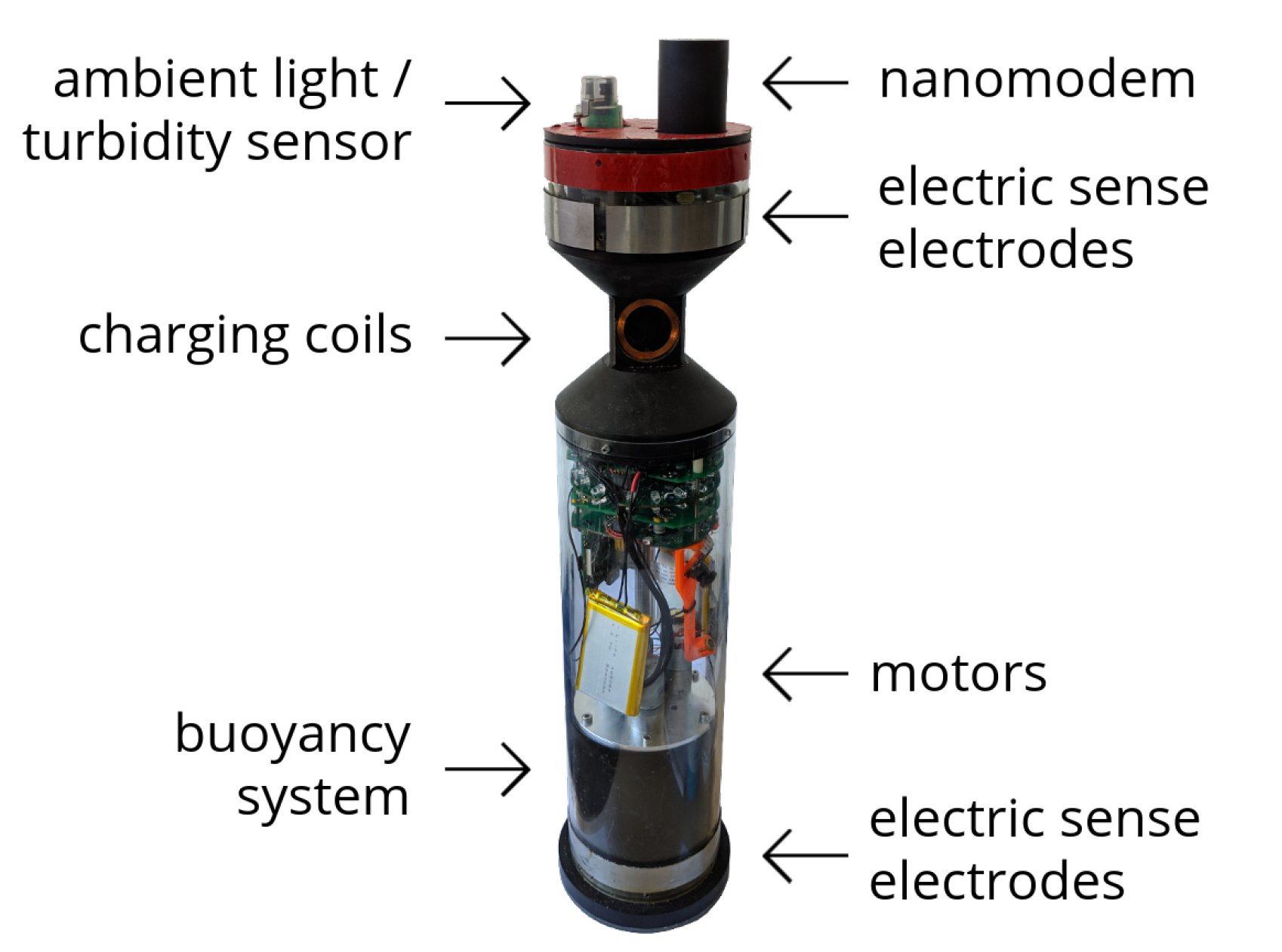
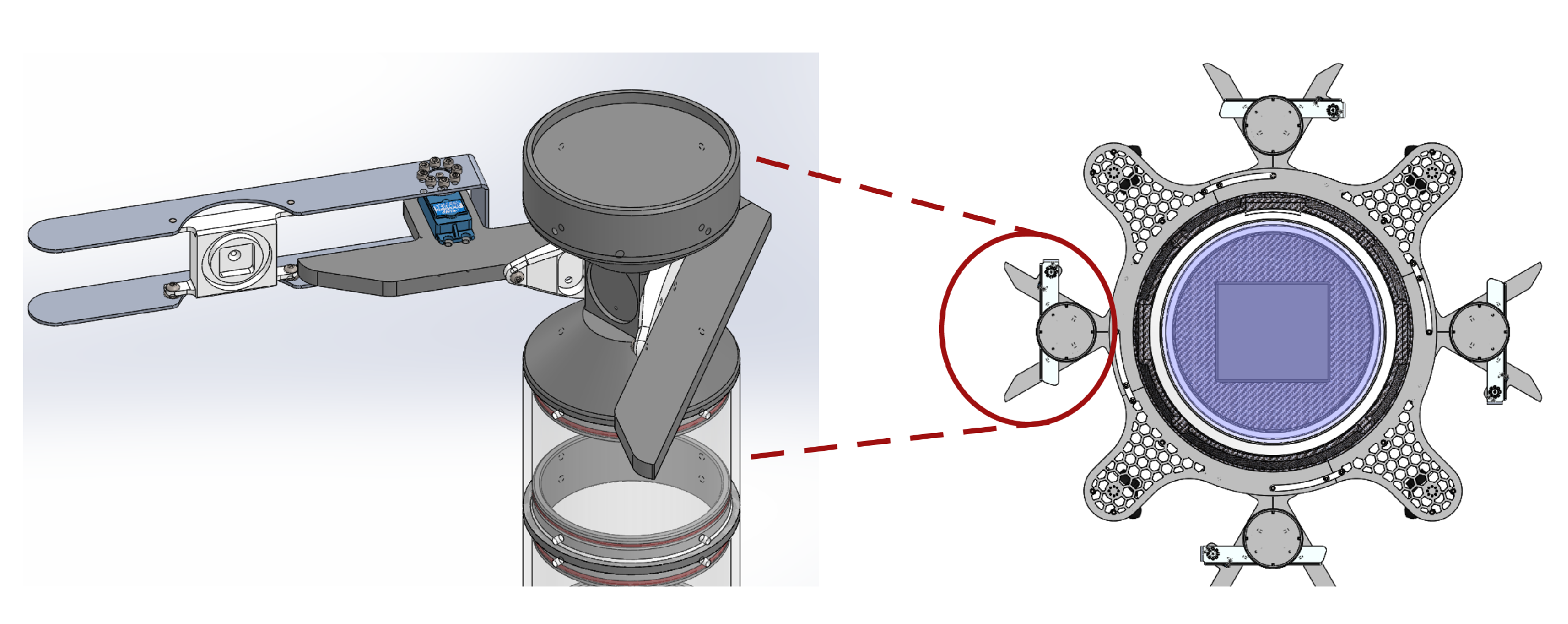
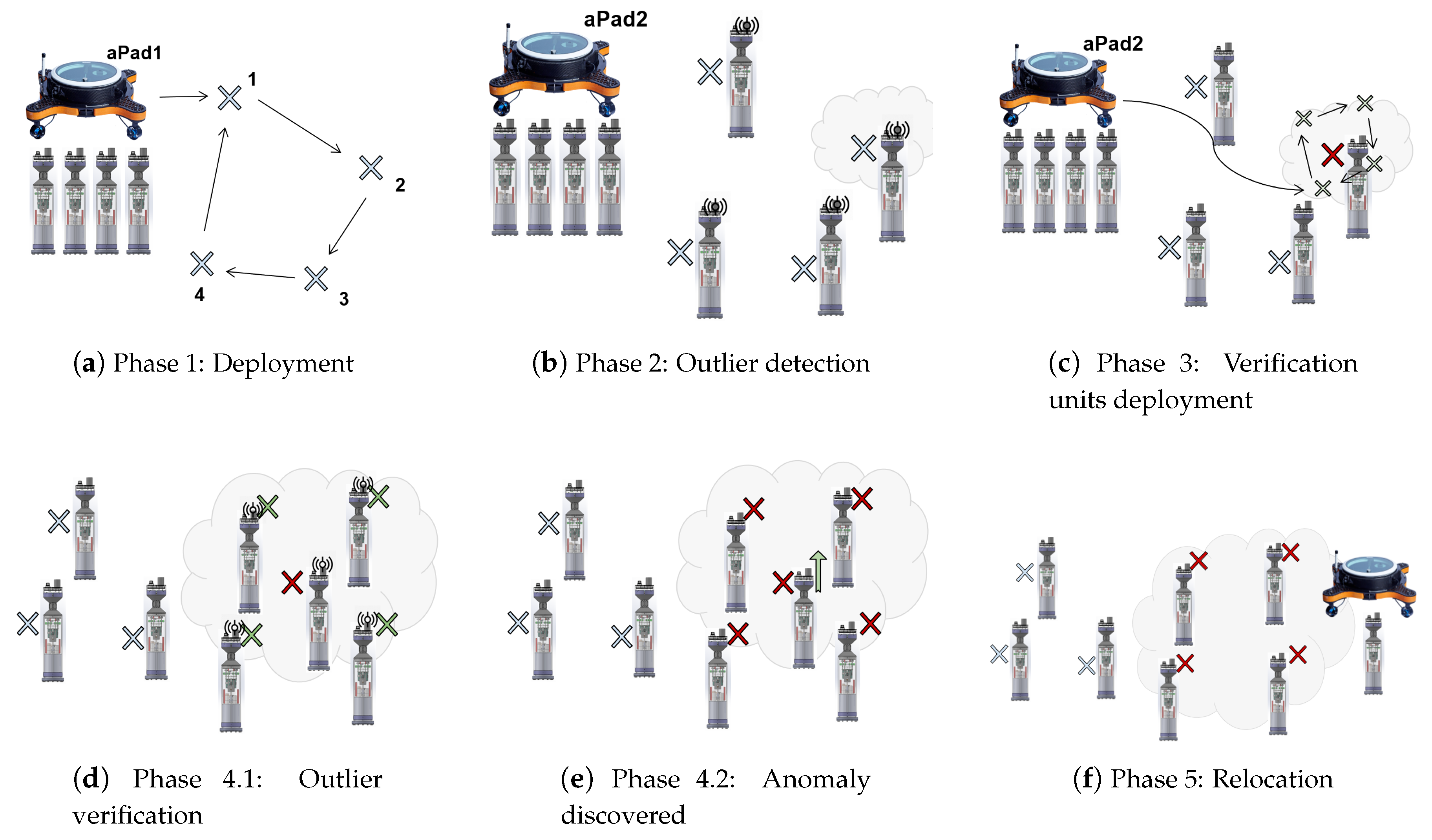




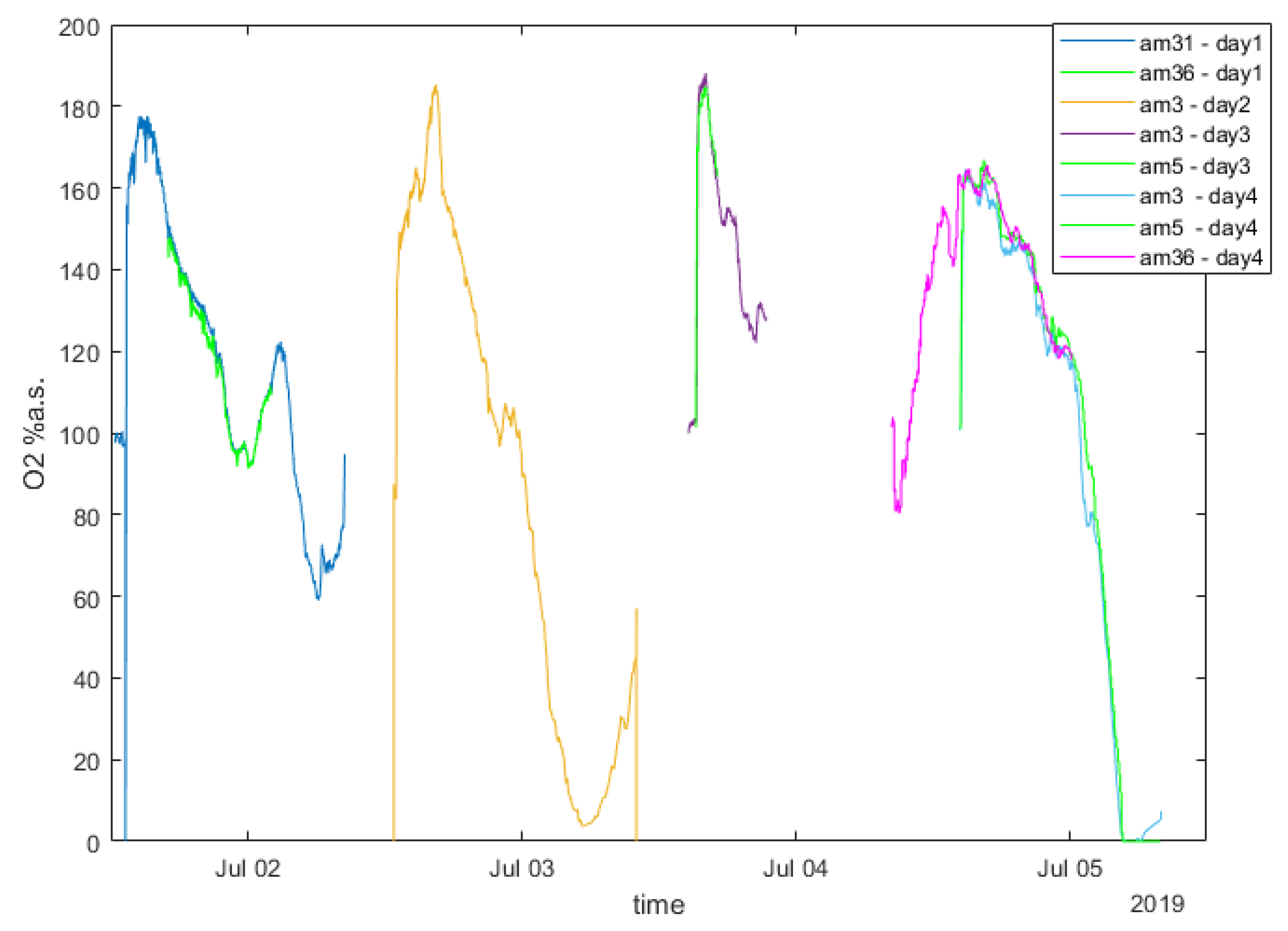
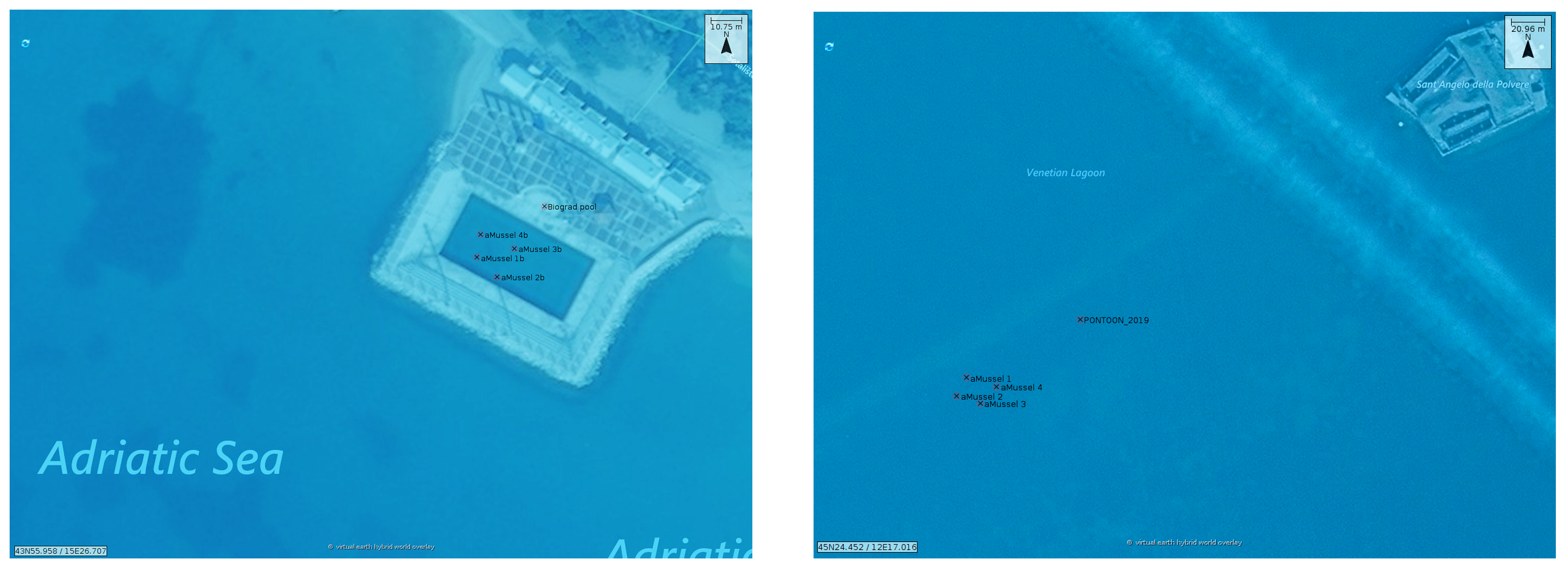

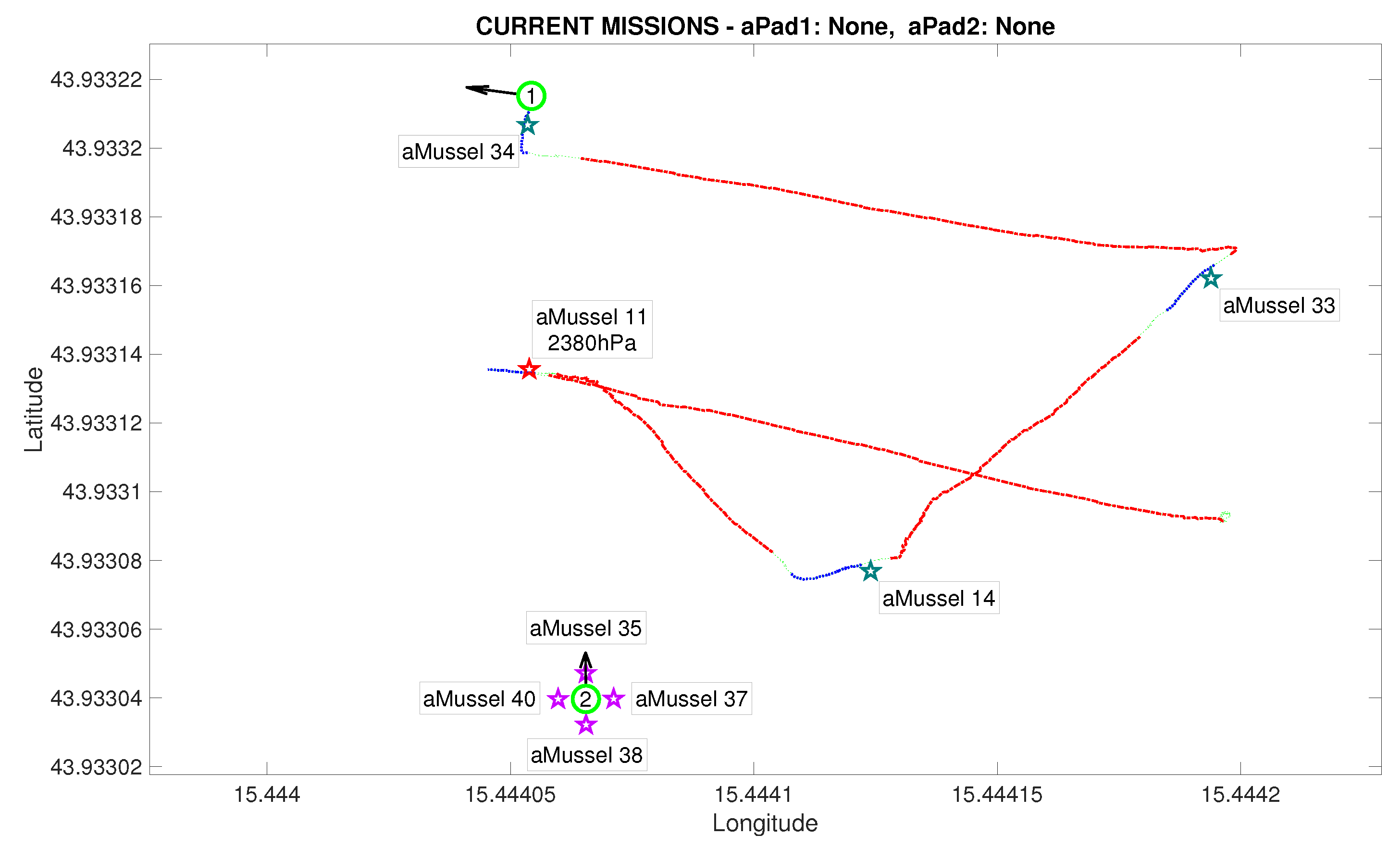
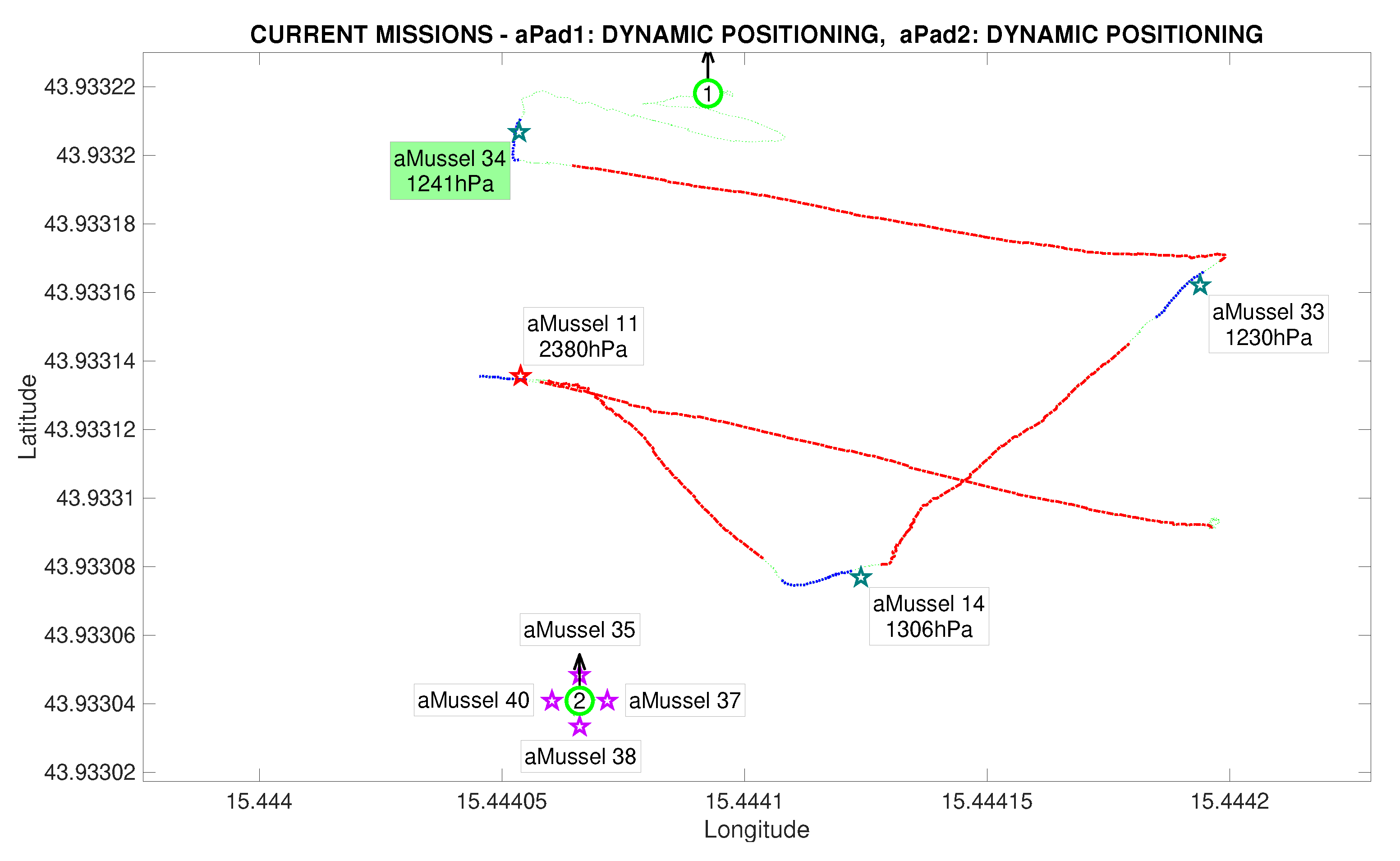
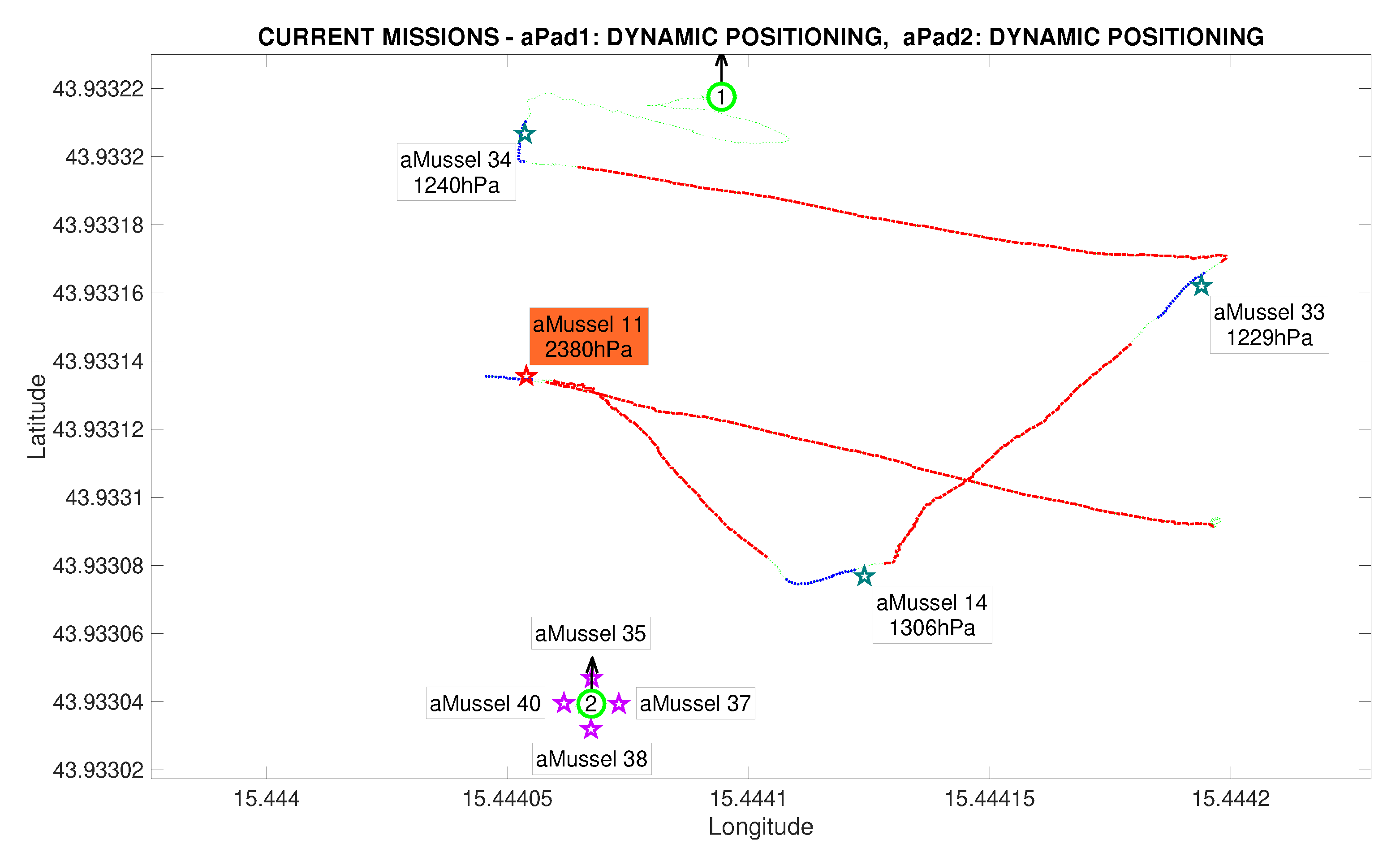
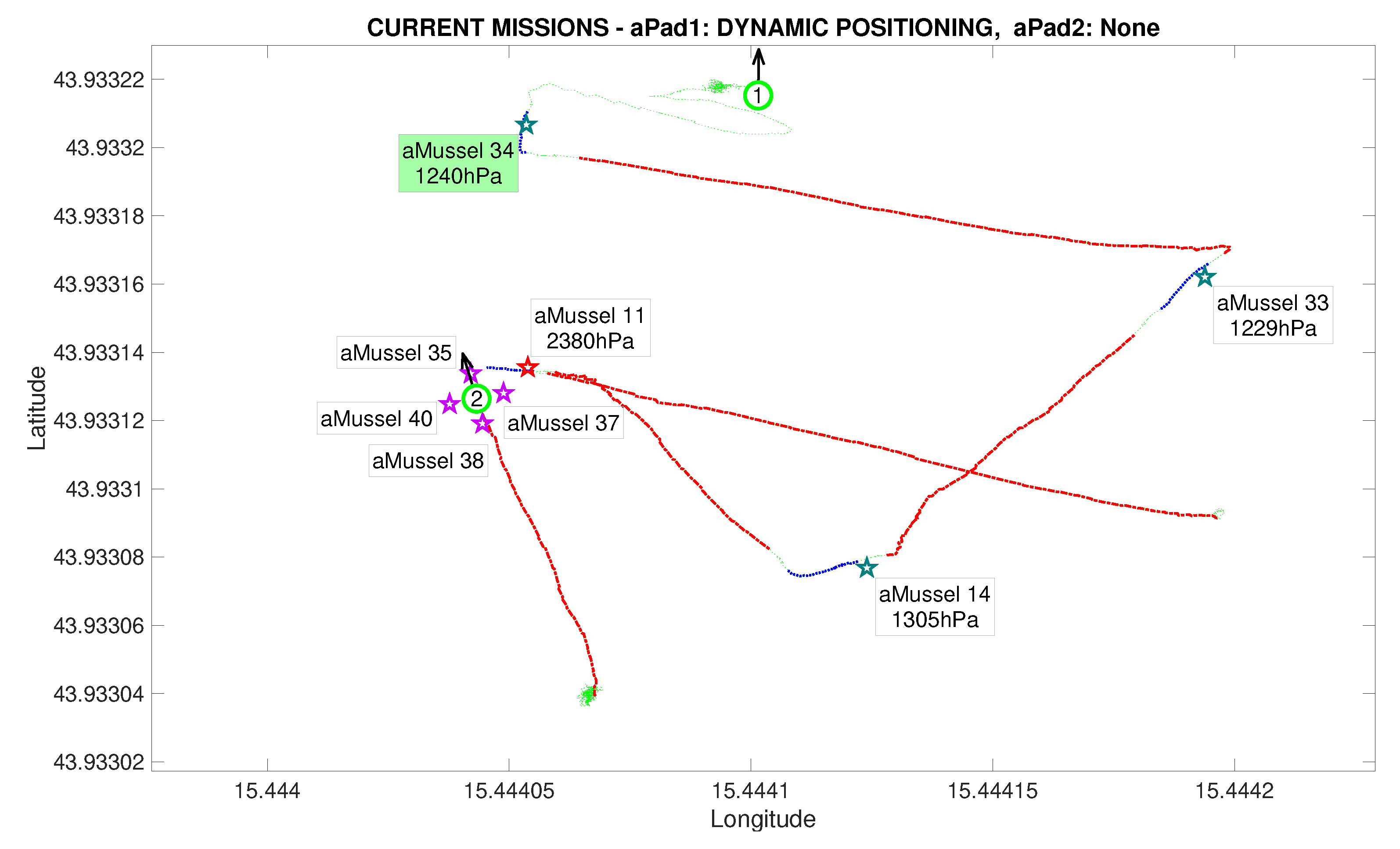

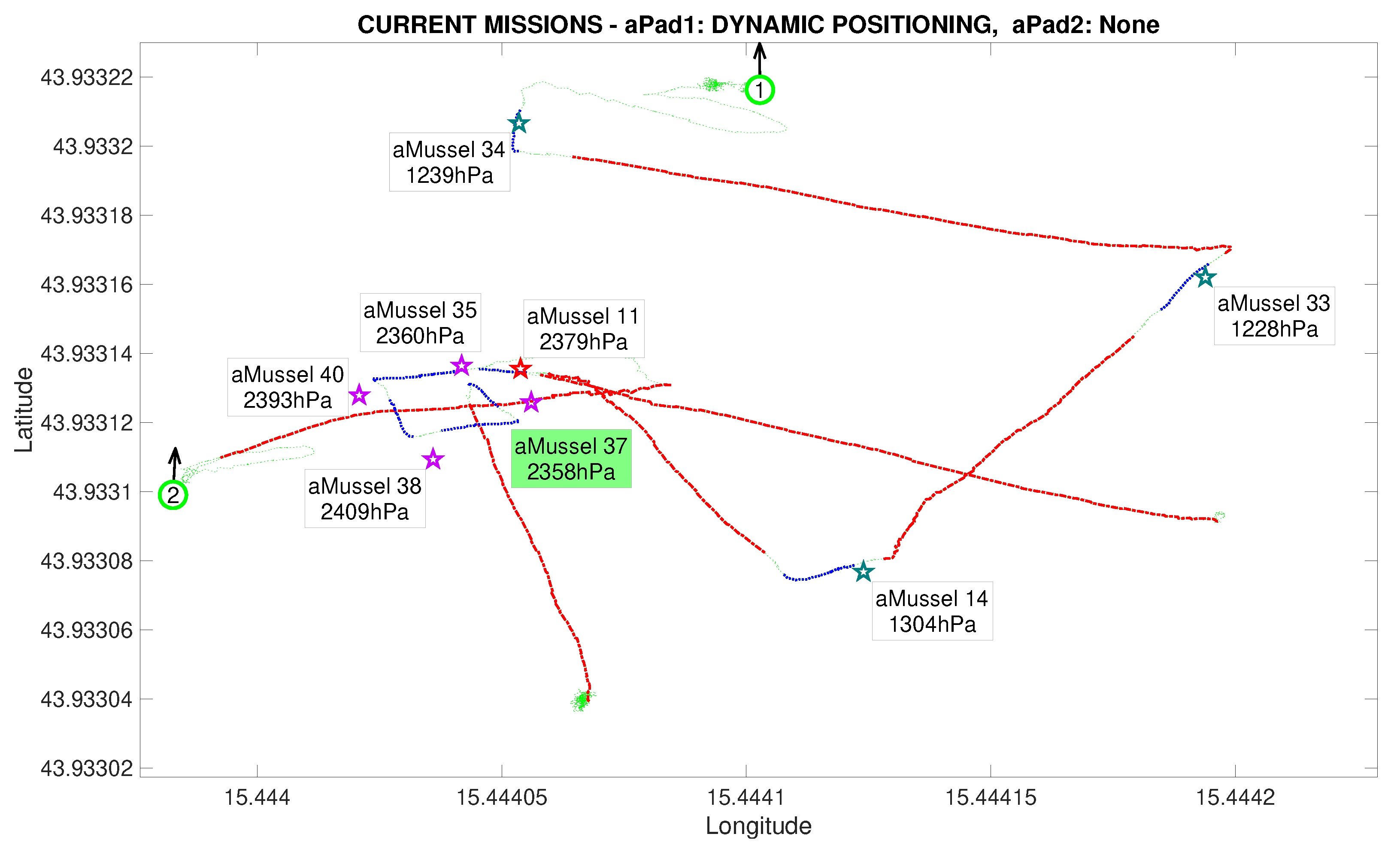
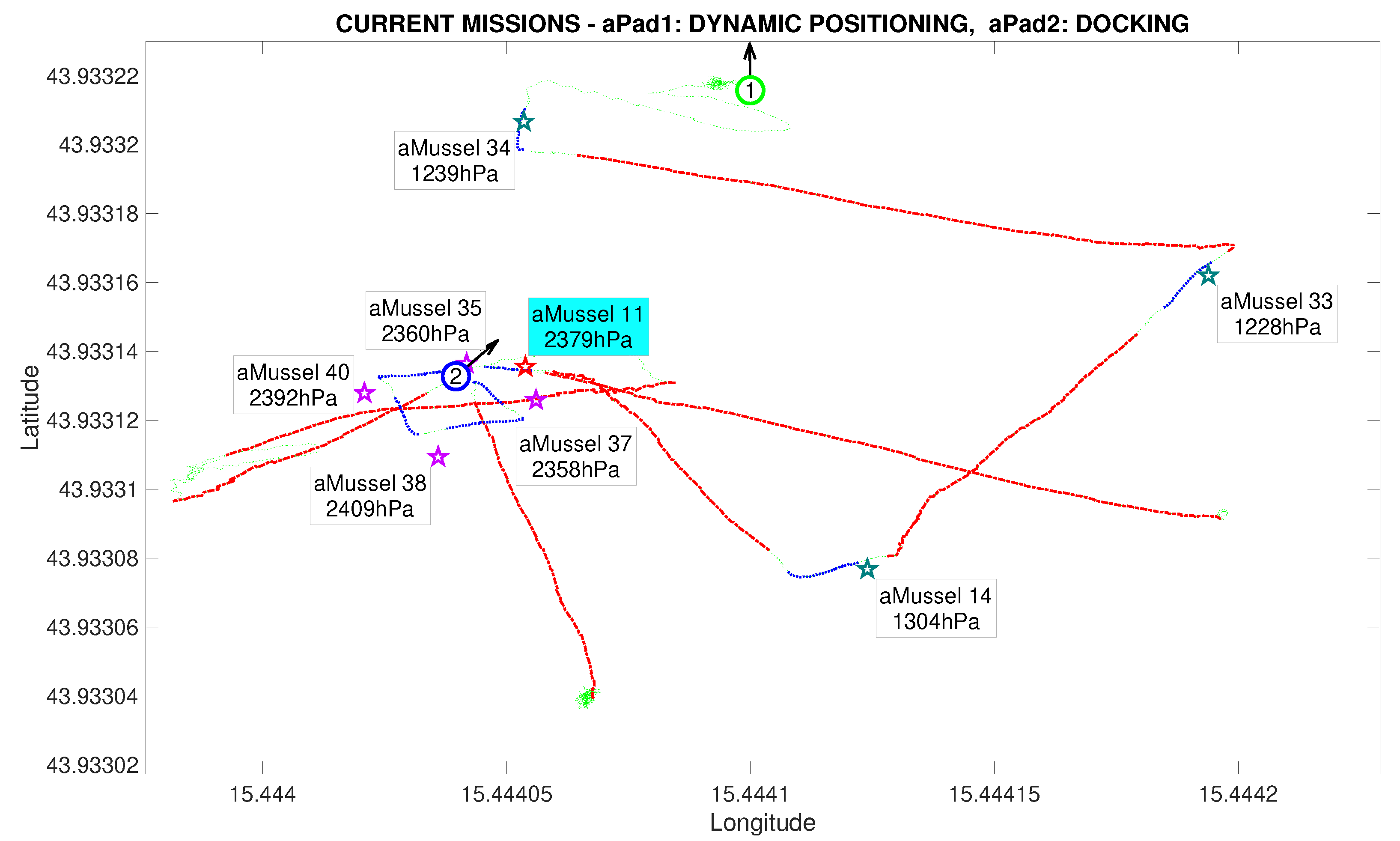
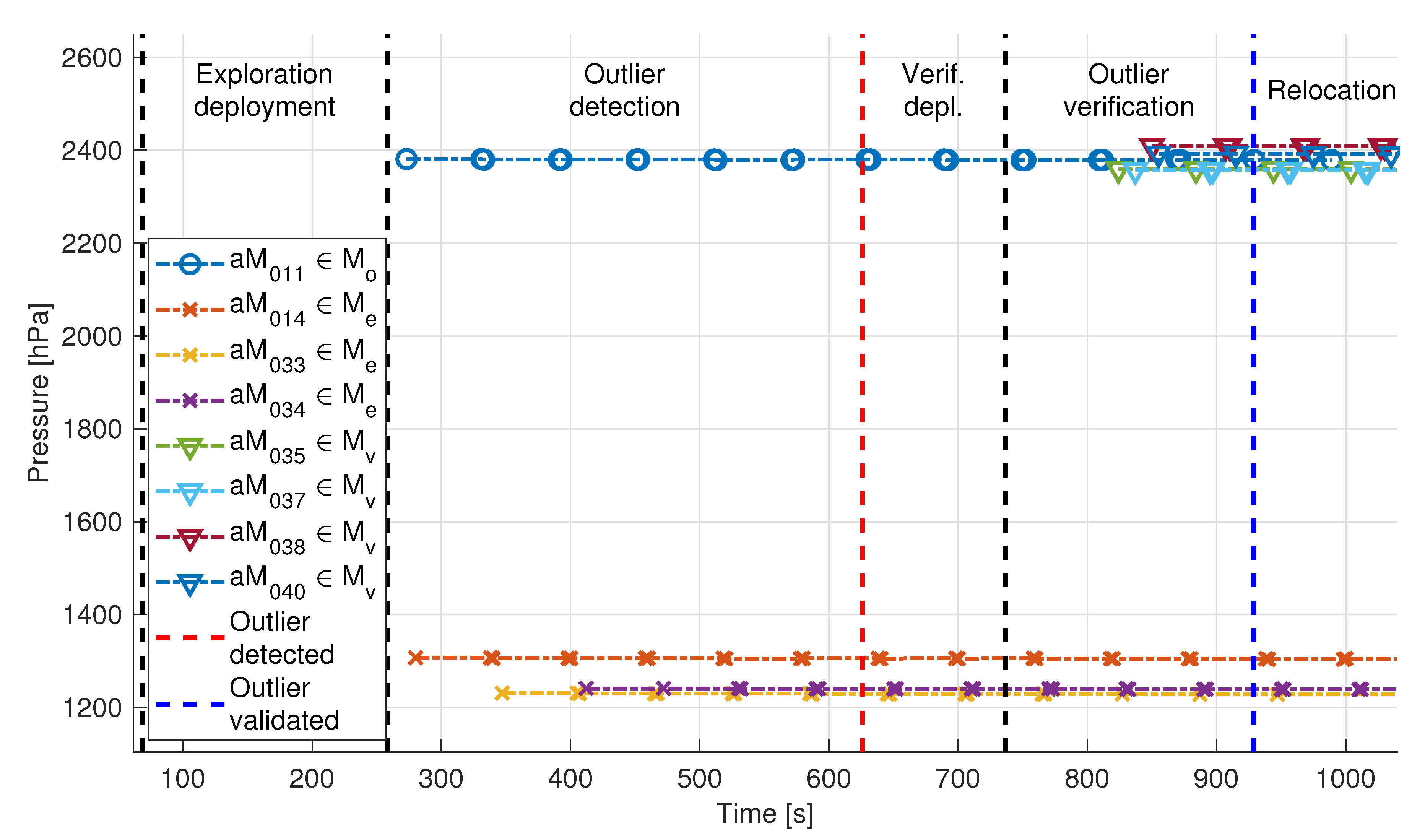

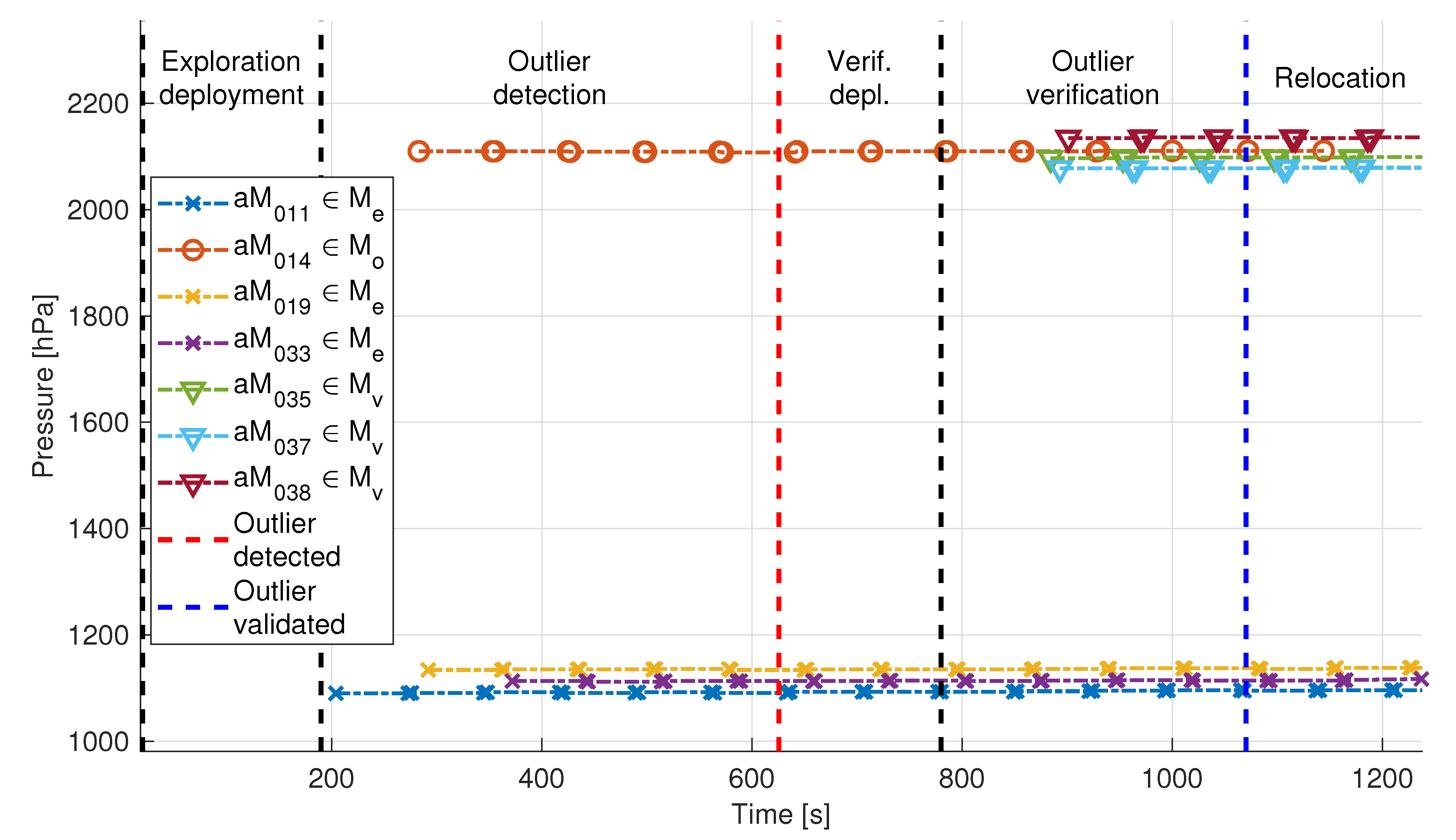
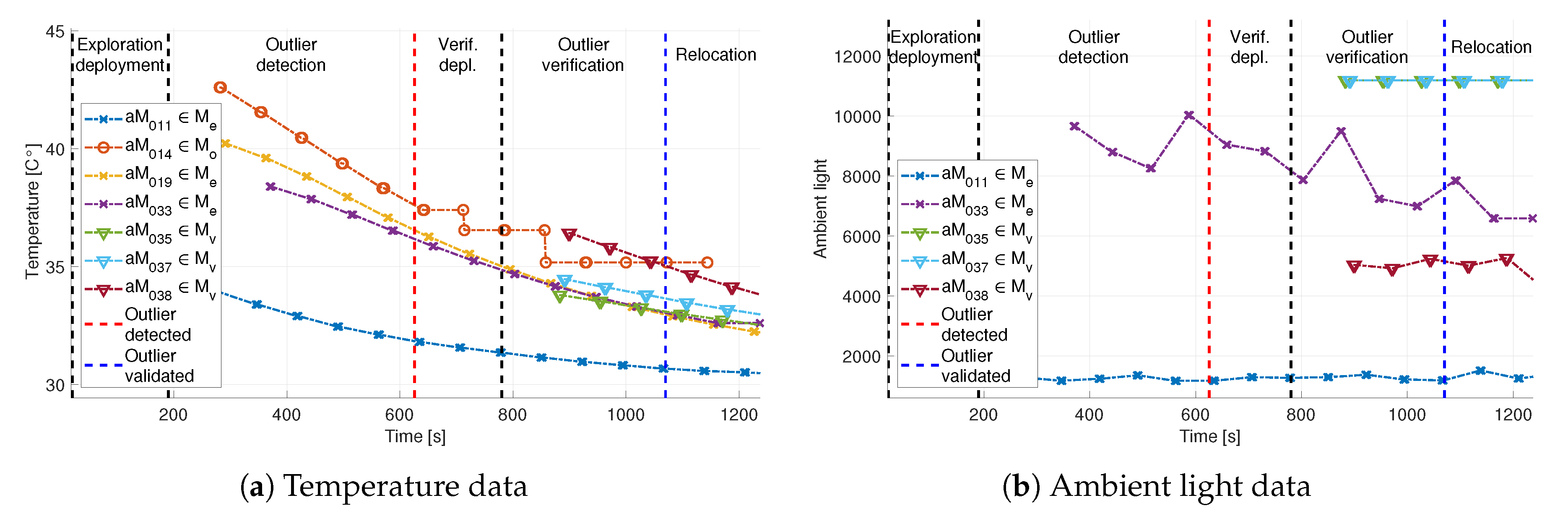
© 2020 by the authors. Licensee MDPI, Basel, Switzerland. This article is an open access article distributed under the terms and conditions of the Creative Commons Attribution (CC BY) license (http://creativecommons.org/licenses/by/4.0/).
Share and Cite
Babić, A.; Lončar, I.; Arbanas, B.; Vasiljević, G.; Petrović, T.; Bogdan, S.; Mišković, N. A Novel Paradigm for Underwater Monitoring Using Mobile Sensor Networks. Sensors 2020, 20, 4615. https://doi.org/10.3390/s20164615
Babić A, Lončar I, Arbanas B, Vasiljević G, Petrović T, Bogdan S, Mišković N. A Novel Paradigm for Underwater Monitoring Using Mobile Sensor Networks. Sensors. 2020; 20(16):4615. https://doi.org/10.3390/s20164615
Chicago/Turabian StyleBabić, Anja, Ivan Lončar, Barbara Arbanas, Goran Vasiljević, Tamara Petrović, Stjepan Bogdan, and Nikola Mišković. 2020. "A Novel Paradigm for Underwater Monitoring Using Mobile Sensor Networks" Sensors 20, no. 16: 4615. https://doi.org/10.3390/s20164615
APA StyleBabić, A., Lončar, I., Arbanas, B., Vasiljević, G., Petrović, T., Bogdan, S., & Mišković, N. (2020). A Novel Paradigm for Underwater Monitoring Using Mobile Sensor Networks. Sensors, 20(16), 4615. https://doi.org/10.3390/s20164615





